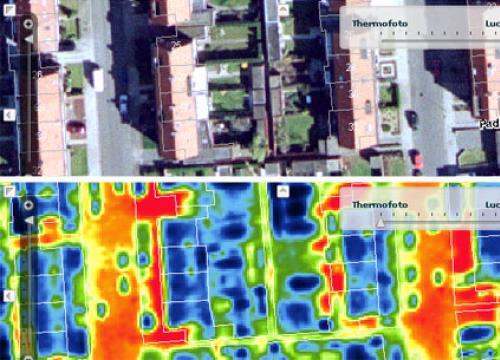How Does Human Activity Affect the Warming Temperatures on Earth?
This lesson explores whether human activities release greenhouse gases, like CO2, and whether these activities can cause temperatures on Earth to increase.
Context for Use
This is the sixth lesson in the Climate Resiliency Education Middle School Climate Unit.

A cloud spelling CO2 wafts out of smoke stacks.
Goals Header
What Students Will Do
Goals Header
What Students Will Do
- There is relationship between the amount of CO2 in the atmosphere and Earth’s temperature.
- That CO2 is in the atmosphere and that CO2 absorbs heat and this causes the temperature of the atmosphere to rise.
- About the “Greenhouse Effect,” and that’s why people call CO2 a greenhouse gas.
- The Greenhouse Effect is how Earth’s temperature is managed by greenhouse gases trapping heat.
- When there’s more CO2 in the atmosphere, more heat is trapped, and temperatures rise more.
- The amount of greenhouse gases in the atmosphere make a difference to Earth’s temperature.
Teaching Materials
Climate Resiliency MS6 - Teacher Guide
Climate Resiliency MS6 - Student Activity Sheet
Climate Resiliency MS6 - Student Activity Sheet Key
Climate Resiliency MS6 - Data Sheet
Climate Resiliency MS6 -CO2 C Cycle Interactive
Description
- (5 minutes) Do Now: Activate knowledge from previous lesson about human activities related to the Industrial Revolution.
- (5 minutes) Sharing Initial Ideas Discussion: Generate ideas for today's lesson.
- (20 minutes) Using Models: Watch the PhET Greenhouse Effect simulation and the EPA's The Greenhouse Effect video.
- (10 minutes) Data analysis and visualizations: Compare students' ideas to the WRI's US Greenhouse Gas Emissions chart and explore NASA's Following Carbon through the Atmosphere visualization.
- (45 minutes) The carbon cycle: Explore PBS's Carbon Dioxide and Carbon Cycle interactive to understand the carbon cycle.
- (15 minutes) Video: Watch the EPA's Climate Change Basics video and discuss.
- (5 minutes) Making connections: Ground the students in the process (focus question) and decide on the next step moving from a correlational connection to a causal mechanism.
- (5 minutes) Brainstorm: Generate ideas for next steps in the investigation.









